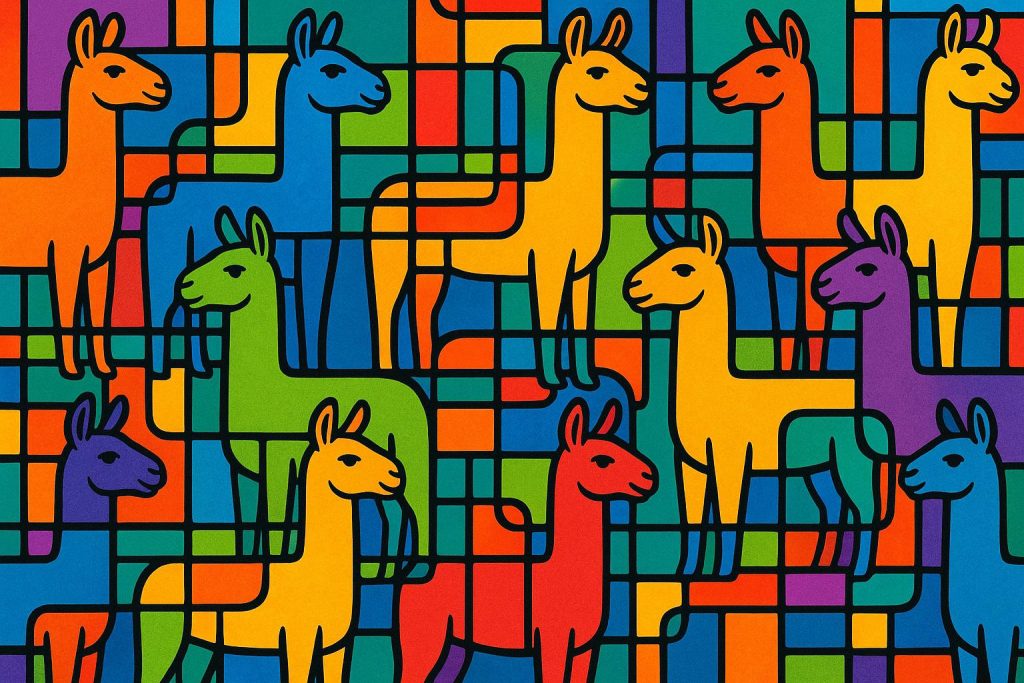Listen to the article
Llama Stack emerges as a comprehensive, open framework designed to unify AI agent deployment and interoperability across diverse platforms, echoing Kubernetes’ transformative impact on container orchestration.
Llama Stack emerges as a promising infrastructure designed to underpin the burgeoning ecosystem of AI agents by establishing a comprehensive, open, and portable framework that extends beyond existing tools like LangChain, LangFlow, and CrewAI. Unlike these frameworks, which primarily focus on providing developer tooling for retrieval-augmented generation and agents, Llama Stack aims to create a foundational, run-anywhere contract that bridges developers and platforms across multiple layers of AI development and deployment.
Fundamentally, Llama Stack is structured around four distinct layers. The first is the build layer, where developers compose agents using familiar client SDKs and toolkits, overlapping with existing frameworks through common abstractions. The second layer concerns the tangible artifacts and dependencies that agents require—such as runtimes, APIs for model inference, tool calls, and telemetry. Importantly, Llama Stack supports both local and remote development and deployment environments, allowing agents to run consistently regardless of backend models or tools. The third layer is a standardized platform and API surface offering core AI services, including inference, memory, tool use, training, data generation, and evaluation. This layer notably supports OpenAI-compatible APIs and the Model Context Protocol (MCP), facilitating seamless integration of existing agents and tools while also extending functionality beyond OpenAI’s closed standards. Lastly, the provider model acts as a plugin system that enables seamless swapping of backend components, such as different model providers or vector databases, without altering the underlying agent code.
Llama Stack’s ambition parallels the impact Kubernetes had on container orchestration. Kubernetes succeeded not merely by making container management easier but by defining a robust control plane and plugin contract that guaranteed portability across vendors and cloud environments. Similarly, Llama Stack seeks to implement a control plane and plugin system for AI agents, ensuring developers’ artifacts run unchanged across various environments and that platform infrastructure remains modular and interchangeable. This could position Llama Stack as a central anchor project driving the maturation and standardization of the open source AI ecosystem.
One of the critical discussions surrounding Llama Stack involves the standards it supports, particularly balancing widespread adoption of OpenAI’s increasingly dominant APIs with the open, community-driven Model Context Protocol. OpenAI APIs have become the de facto standard in AI inference but remain proprietary, raising questions about the influence a single company wields over AI agent ecosystems. MCP, developed by Anthropic and supported by Llama Stack, is an open protocol designed to standardize AI tool integration, allowing agents to dynamically discover and use external tools and data sources. This openness enables innovations such as hybrid search modes that combine semantic and keyword searches—capabilities not present in current OpenAI APIs. Llama Stack’s dual compatibility strategy thus provides developers with both immediate functionality and a pathway to open standards that could decouple AI agent APIs from proprietary constraints.
The governance dimension is equally vital. Just as Kubernetes benefited from the neutral oversight of the Cloud Native Computing Foundation, Llama Stack’s future success likely hinges on establishing a similar governance framework. This could foster enterprise confidence, encourage vendor participation, and prevent the project from becoming a fragmented or company-controlled effort. Llama Stack’s recent move to a neutral standalone GitHub repository hints at initial steps in this direction, but broader community consensus and governance structures will be essential in determining whether it can ascend to industry-wide adoption as the “Kubernetes of agents.”
In the broader context, recent academic and technical advancements complement Llama Stack’s vision. Innovations like ScaleMCP demonstrate enhanced tool retrieval and agent invocation performance through dynamic tool selection protocols built on MCP. Other research highlights frameworks such as Graph of Agents that improve long-context handling via multi-agent collaboration, which could dovetail with Llama Stack’s multi-layered architecture. Additionally, governance initiatives exemplified by Governance-as-a-Service offer modular, policy-driven approaches for regulating agent outputs dynamically without altering underlying models—an important consideration as agent deployment scales and regulatory scrutiny intensifies.
Importantly, Llama Stack is a collaborative initiative initially started by Meta but increasingly embraced by an array of contributors including Anthropic, OpenAI, NVIDIA, Groq, AI Alliance, and Red Hat. This broad participation underscores the shared industry recognition of the need for an open, standardized foundation for AI agents that ensures interoperability, portability, and freedom from vendor lock-in.
For developers, Llama Stack promises consistent agent operation across evolving infrastructures; for platform operators, it offers modularity and escape from proprietary dependencies; and for the community, it provides a much-needed centre of gravity to avoid the fragmentation plaguing early AI agent innovations. Ultimately, Llama Stack represents less a replacement of existing agent frameworks and more the critical open, run-anywhere contract needed beneath them to sustain a vibrant, competitive, and innovative AI agent ecosystem.
📌 Reference Map:
Source: Fuse Wire Services


